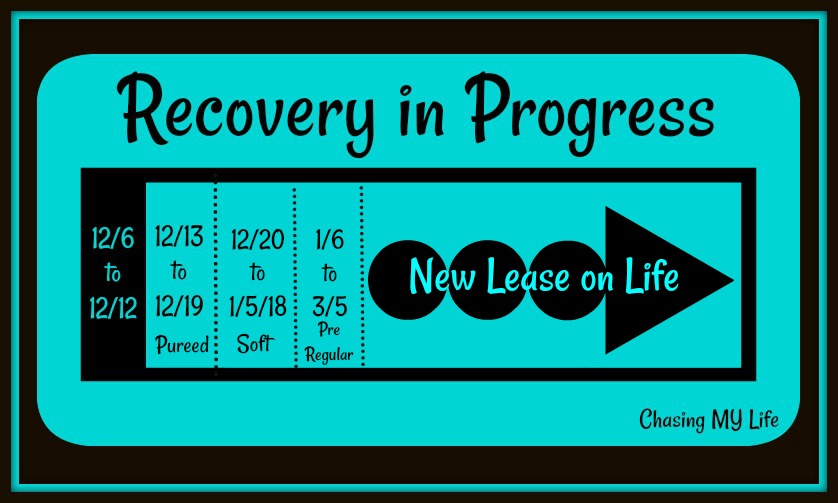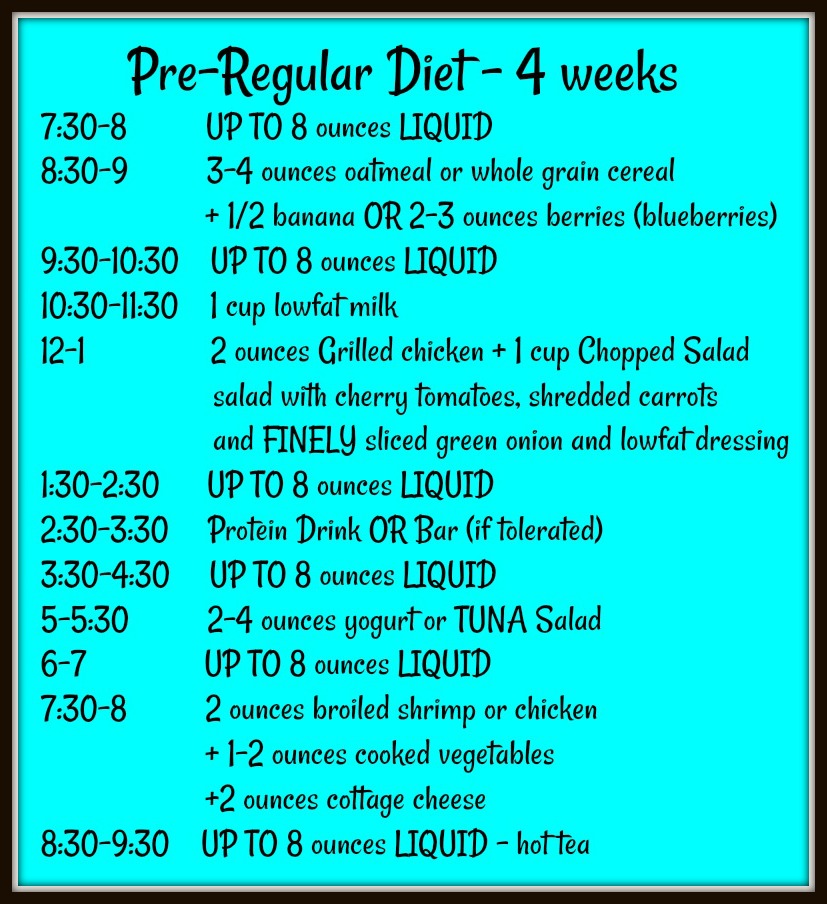It’s hard to believe we are at the 6 month mark. Sometimes it feels like it’s been 10 years already. Then when I try to eat something I’m not yet ready for I realize, it’s just been a very short time in the realm of relearning how to eat.
PROGRESS REPORT
So, for some weird AND unknown reason many food smells that were once welcoming AND comforting now turn my stomach. The doctor says this is fairly normal, but CANNOT answer why it is “normal”. Some of the once loved foods that I can no longer stand to be around are:
- hard boil eggs
- pancakes
- cabbage
- sausage
I also cannot eat much bread, potatoes or rices because they take up too much space in my egg sized portion of stomach with virtually no nutrient value.
‘REGULAR’ WILL BE A LONG TERM AND ONGOING LEARNING CURVE for the REST of my life
I have SLE (Systemic Lupus), Fibromyalgia and recently ended up with a non-weight loss stomach bypass that changed my life beyond belief. Just 6 months ago you would NOT have been able to convince me to EVER give up ALL sugar – (nothing like waking up from a routine surgery and learning it was anything but routine and you can never again have certain things), but I have to say no sugar is NOT the worst thing ever. I ALSO DO NOT do ANY sugar substitutes or preservatives because of the SLE and Fibro. So, while my diet does become a bit limited, it is possible to cope. The thing I REALLY miss is coffee, but am making it work with green tea which is ultimately so much more healthy.
I had needed to lose 15 pounds or so as we all do at this stage in life, but now at the 50 pound mark lost, the doctor’s concern is that I lose no more and try to maintain where I am – he actually felt that way at the 25-30 pound mark. Because there is no “real” stomach or holding vessel for food, the body does not absorb much at all. For that reason I have certain vitamins and supplements that will be 5 times a day for the rest of my life. I also have to be picky on what I eat as many foods still do not agree with me and I can never eat sugar again. Anything with high fat is also an issue so it really limits my choices every day. The biggest lifetime issue will be the amount (or lack there of) of food I can eat at any given time. My stomach is now the size of an egg. My stomach does not and will not stretch. It also does not absorb much in the way of nutrients. My stomach will NOT grow or change in any way. Eating is now and always will be in the future something of a challenge.

One of the biggest shocks was the need for ALL new clothes, I went from a size 8-10 down to a 2 so far. I have had to buy ALL new underwear, bras, pants, dresses and even shoes! Yes, I said shoes. I lost an entire shoe size – I didn’t even know that was possible. This is just one of the piles of shoes I made when trying to find something to fit on Easter morning.


 I did begin my exercising this week, but it’s going slow as there are a couple complications not to mention being so weak from the excessive weight loss so fast.
I did begin my exercising this week, but it’s going slow as there are a couple complications not to mention being so weak from the excessive weight loss so fast.




